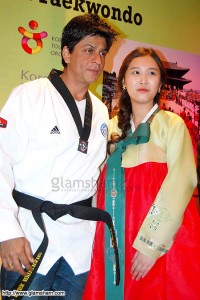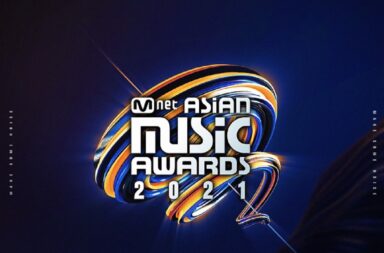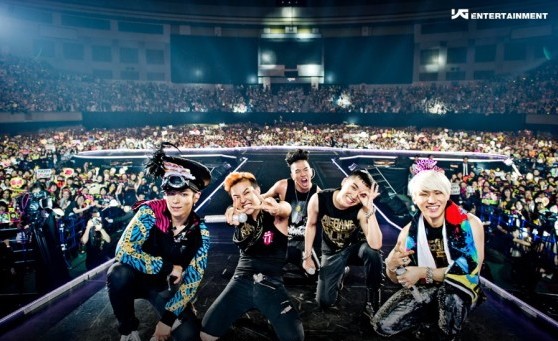 Breaking news: Korean pop culture has gone international. I know, it caught me by surprise, too.
Breaking news: Korean pop culture has gone international. I know, it caught me by surprise, too.
With Hallyu’s rise in prominence globally, the Korean entertainment industry has opened itself up to various new demographics outside of their target audience of Koreans living in Korea. A couple of months ago, Mark had written about the appeal of Hallyu to Asian-Americans, followed by Cynthia with her own piece about Hallyu and Black Americans.
Reading of the relationships between these two racial groups and Hallyu, it got me thinking about being a South Asian K-pop fan, with South Asian defined as those of Indian, Sri Lankan, Pakistani, Bangladeshi, Nepali, Burmese and Maldivian descent. Mark has Hallyu as an alternative to American media in terms of self-representation in pop culture, while Cynthia could see artistic aspects of her Black American culture showcased in another environment; but what do I, as an Indian, see in Hallyu? How does my race and/or ethnicity play into my appreciation of pop culture? Is there even a link between the two? Even a White Western fan would find something in K-pop’s devotion to following US music trends and the increasingly Western appearance of Korean society in dramas and variety shows. But what is there for a South Asian fan?
There arose the question of whether it was South Asians living and growing up in Western societies who were more interested in K-pop, but that is definitely not the case. The Times Of India states that K-pop spread to Hindustan via the (rather geographically isolated) north-eastern states. Tensions between the claimed official Indian language, Hindi, and the various other regional languages have always run high, resulting in the oft-practised shunning of and protest against Hindi in these areas. Such a ban on Hindi film (referred to in the West as “Bollywood”) and television in Manipur was instigated in 2000. And so, seeking alternative entertainment, the residents of Manipur discovered Korean television, most likely by way of China.
 The Hallyu wave has since spread to other parts of India, with many fans focused in its metropolises. And naturally, the rest of South Asia has caught on as well, whether via regional super-power India or through other means — the popularity “Gangnam Style” gained in the US being the latest driving force in bringing K-pop to people’s attention. Super Junior leader Leeteuk mentioned on Yoo Hee-yeol‘s Sketchbook that even a Sri Lankan president and his children were fans of his group.
The Hallyu wave has since spread to other parts of India, with many fans focused in its metropolises. And naturally, the rest of South Asia has caught on as well, whether via regional super-power India or through other means — the popularity “Gangnam Style” gained in the US being the latest driving force in bringing K-pop to people’s attention. Super Junior leader Leeteuk mentioned on Yoo Hee-yeol‘s Sketchbook that even a Sri Lankan president and his children were fans of his group.
So what is Hallyu’s appeal to the people in and from South Asia? Considering the multilingual reality of most South Asian nations, most people are not immediately alarmed at hearing another language; thus it is not a barrier to developing an interest in Hallyu as it may be in other places around the world. Furthermore, the principles of filial peity, respect to elders and working hard for success are values which are upheld in all parts of Asia, and as such are easy to relate to even when seen in the context of Korean culture. People also mention the greater variation of themes presented in K-dramas and their deft handling as well as the greater conformation to conservative values. As tends to be the case, K-pop is less popular than K-dramas are, but the highly visual nature of K-pop is alluring, and familiarity can be found in the song-and-dance routines of both K-pop and South Asian films. The shorter length of K-pop songs may also work in its favour.
But for all the ways in which Hallyu is similar to, or even provides something more than, South Asian pop cultures, interest in it is still on the fringe (unlike in South East Asia), and South Asian Hallyu fans are regarded with caution or even as a curious novelty. Despite all these commonalities, Korean entertainment is nevertheless differentiated — not that this is a bad thing, all cultures are unique after all; but the differences lead to it being regarded as foreign and therefore regarded with suspicion. Given that even a language from one’s own country is seen as a threat (Hindi), it is unsurprising that Korean could be regarded with such suspicion. This suspicion also extends to the fan as well: “Why are you watching all this when we have so much in a language you actually understand?” My father actually said that to me, and I’m sure many fellow South Asian K-pop fans have had the same kind of question thrown at them too. While no-one wants to see people becoming overly influenced by Hallyu, the extent to which Korean culture regarded “foreign” and vice versa can adversely affect fans and their experience with Hallyu.
 And K-pop fans living in Western societies have an extra level of racial distinction to deal with as well. All Western societies distinguish between East and South Asians; and save for the UK, other Western societies in Oceania and, especially, North America, define “Asian” as being “East Asian.” Due (mostly) to physical appearances, are all but erased by this connotation, and in the end resort to creating their own separate tag, the same which happens to those described as “Middle-Eastern.” Even watching the K-pop-driven SBS Popasia in Australia, nothing west of China is aired, and it only serves to reinforce the notion that Asian means East and South-east: Natalie Tran is Asian-Australian, but it takes people longer to realise that I am as well. And while none of this is specifically the fault of Hallyu itself but rather the preconceived notions ingrained in Western psyches, it cannot be denied that the rise of Hallyu only further affirms the “East = Asian” view, which in turn entrenches the divide between the different parts of Asia (while also homogenising each part therein — just as all East Asians may be called “Chinese,” all South Asians/brown people may be called “Indian.”).
And K-pop fans living in Western societies have an extra level of racial distinction to deal with as well. All Western societies distinguish between East and South Asians; and save for the UK, other Western societies in Oceania and, especially, North America, define “Asian” as being “East Asian.” Due (mostly) to physical appearances, are all but erased by this connotation, and in the end resort to creating their own separate tag, the same which happens to those described as “Middle-Eastern.” Even watching the K-pop-driven SBS Popasia in Australia, nothing west of China is aired, and it only serves to reinforce the notion that Asian means East and South-east: Natalie Tran is Asian-Australian, but it takes people longer to realise that I am as well. And while none of this is specifically the fault of Hallyu itself but rather the preconceived notions ingrained in Western psyches, it cannot be denied that the rise of Hallyu only further affirms the “East = Asian” view, which in turn entrenches the divide between the different parts of Asia (while also homogenising each part therein — just as all East Asians may be called “Chinese,” all South Asians/brown people may be called “Indian.”).
In terms of ethnicity, South Asian fans are almost invisible in the Hallyu fandom. The low level of interest seen there (especially in comparison to the rest of Asia) as well as the strong presence of multiple home-grown entertainment industries do not make it a viable market for expansion, and South Asian diasporic fans are lumped in with other international fans. Furthermore, representations of Indian culture in K-pop have only served to offend — these depictions are an example of how the divide in Western culture works as well, because globalisation allows for the spread of this divide and of the stereotypes associated with each side of the divide, leading to things like Beast’s comedic yet ill-advised “Mystery” parody. And with issues like colourism also in the fray, navigating K-pop as a South Asian can be a sometimes fraught experience.
But even in spite of all these negatives, what does draw South Asians (or, at least, myself) to Hallyu is the chance to see both familiarity and dissimilarity. That is, being able to see values that I grew up with presented in a different way than what I have experienced before, something more different than my Indian films but more relatable than American television. It’s by no means a perfect fit, and I will probably never see 2NE1 play Mumbai or see a brown girl being serenaded by Changmin and Kyuhyun and instead probably suffer through more racist caricatures — but I go through the same thing with Western media as well, so, really, it’s no different.
And so, readers, I turn it over to you: are you South Asian K-pop fan? Why does it appeal to you What has your experience as a fan been like? Do you get asked why you watch Korean stuff when there’s already a wealth of entertainment in a language you understand? And, for our Malaysian and Singaporean readers: there do not seem to be many Tamil K-pop fans from there unless they happen to live in a Western society like Indiana: is there any reason for this?
(Images via: YG Entertainment, glamsham, SM Entertainment, tumblr)


